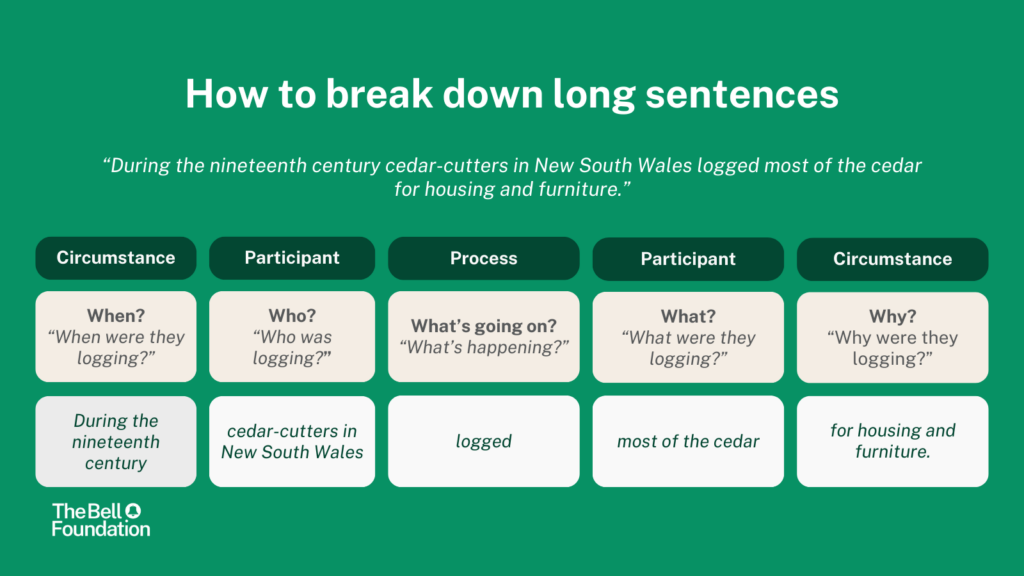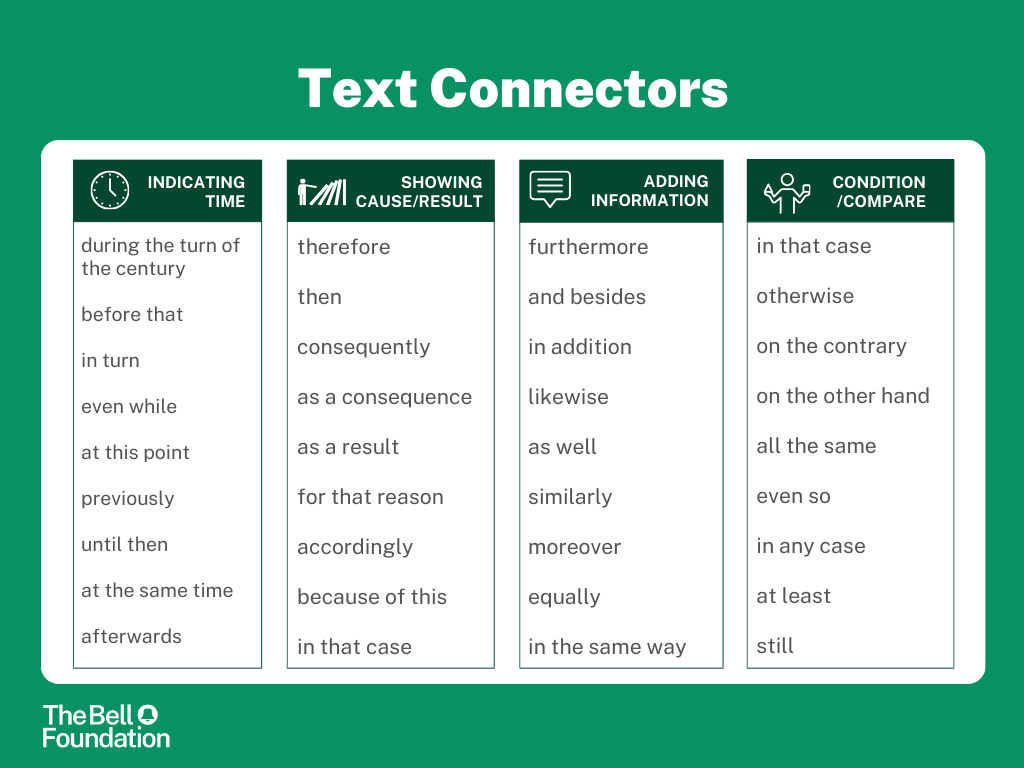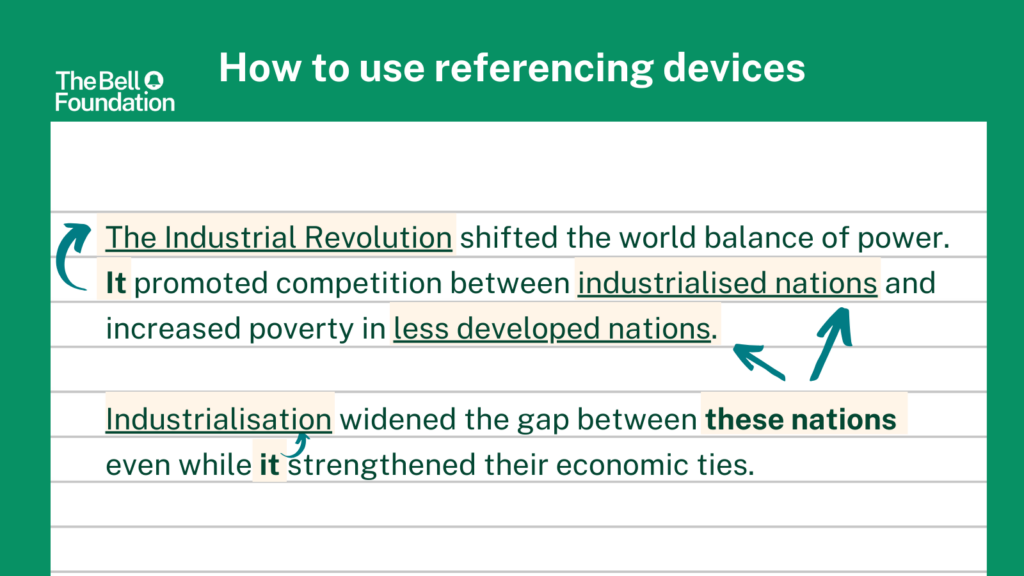Teaching EAL Learners in History
Children who have recently arrived in the UK may have had exposure to different historical knowledge, different figures of historical importance and may have different perspectives on historical topics studied in the UK. Likewise, some learners may not be used to engaging in discussions around complex historical issues and sharing their perspectives as is often expected in the UK. While this may pose additional challenges for new arrivals, the range of knowledge and experiences they bring to the classroom will greatly benefit all learners.
History will also present linguistic challenges, especially to those learners developing competency in English at the secondary level. Students at this level will need to read and write dense texts where complex concepts are expressed in fewer words and where abstract language is often used.
What are the challenges for EAL learners in history lessons?
EAL learners face a range of challenges in terms of the language requirements of history lessons; they may have difficulties at word, sentence and text level.
Word level
EAL learners are likely to encounter problems with the following vocabulary and phrases associated with history:
- Words that represent abstract concepts: power, equality, freedom, imperialism. These words are not material objects so their meaning cannot be represented easily by visuals. They may also have multiple meanings that require a shared understanding. For example, the word ‘power’ can represent strength, energy or force.
- Complex noun groups: ‘the policy of extending one country’s rule over many other lands’, ‘the cycle of industrialisation’, ‘the development of new markets around the world’, ‘the need for resources to supply the factories of Europe’.
Sentence level
History texts often include complex sentence structures:
- Long sentences: Adding information about the circumstance of key events and actions (for example, when, where, how, etc.) is common in history text, especially for indicating time and place. This can add to the length of sentences, making them more difficult for EAL learners to comprehend. For example, ‘During the nineteenth century cedar-cutters in New South Wales logged most of the cedar for housing and furniture.’
Text level
History texts include a broad range of genres, where several can often exist within a single text. This can be challenging for EAL learners if the purpose and structure of the text is not made explicitly known upfront:
- Text purpose and structure: Genres typically associated with history include recounts, historical accounts or explanations and biographies. Each will be structured differently according to its purpose, which can cause confusion. For example, does the text recount a chronological sequence of events or does it build an explanation for a chain of events?
- Text connecters: History discourse often uses time markers to structure a text, for example, ‘After the turn of the century’, ‘Prior to this, ‘Even while’. Also, references to causality are common such as, ‘consequently’, ‘as a result’, ‘for that reason’. If the meaning of these markers is not understood, the text will be difficult to follow.
- Referring devices: History texts often use words that refer back to something that has already been mentioned. The most common of these cohesive devices are pronouns (their, it, his, etc.), yet demonstratives such as, ‘this’, ‘that’, ‘these’, ‘those’, are prevalent and can often refer back to whole stretches of text, making it difficult for EAL learners to know exactly what is being referred back to.
How can I support EAL learners to tackle unfamiliar historical language?
General strategies can all support comprehension of history content, such as:
- Promoting the use of a learner’s home language/s;
- Building background;
- Making connections between the learners’ previous knowledge of history with history studied in the UK;
- Using visuals;
- Using graphic organisers;
- Developing vocabulary;
- Working collaboratively.
However, for learners to reach their full academic potential, they will also need linguistic support. History teachers, as experts in the room, will be best placed to teach all learners about the language of history. Ideally, focusing on language would occur through cross curriculum planning, possibly based upon key time periods, so concepts and language can be reinforced in other subjects, for example History and English.
One effective way to develop history-specific language is to choose a key history text or segment of text and talk about its language features. The following strategies can be used:
- Abstract words: Challenge learners to a word hunt. For example, how many times are words associated with ‘progress’ used in the history text? For instance, the breadth of the words found can help demonstrate the complexity of the topic, ‘industrialisation’, what it means, what effects it had, etc.
- Complex noun groups: Have learners unpack these by trying to precisely specify in everyday language what they mean. This will give students a greater understanding of the meaning embedded in the text and will give you a better understanding of their knowledge.
- Long sentences: Teachers do not need to know a lot about grammar to help EAL learners try to comprehend difficult sentences. One way to assist is to model how a sentence can be broken down into three meaning-based elements:
- Processes: What is going on? (activities, behaviours, processes or states of being)
- Participants: Who or what is taking part? (people, places, things, concepts, etc.)
- Circumstances: The details or circumstances surrounding these events (when?, where?, how?, with what?, etc.)

By knowing these meaning-based elements, teachers can model how to unpack a sentence by asking appropriate probing questions. Start by finding the ‘Process’ first (what’s happening?) and then ask probing questions from there.
To further encourage independence, teach learners to ask probing questions themselves or to others as they read. Asking probing questions can also support with extending writing or conversations.
- Text purpose and structure: Deconstruct a text prior to reading for its purpose, structure, layout and visual features to reduce the cognitive load for EAL learners. Support learners with these organisational features as they construct written texts as well.
- Text connectors: Help EAL learners understand the definition or meaning of connectors by placing them within appropriate categories of their use. Highlight connectors together as you read a text and have learners keep or create lists of text connectors for reference as they read or write.

- Reference devices: Mark up a text together to visually show what the relational words are referring back to.

How can I make a fair assessment of EAL learners’ prior attainment in history?
Establishing a learner profile will help you identify possible areas of existing history knowledge and gaps. Find out about the following:
- Where is the learner from?
- What is their world view? What cultural and religious beliefs shape their world view?
- What historical events and figures are associated with the country or countries they have come from?
- How many languages do they know? Are they literate in any of them? What is their educational background?
Highlighted practice
Watch the accompanying video as a history teacher describes how she focuses on language and language development during a lesson on Queen Elizabeth. Notice how she:
- Sets high expectations of language use;
- Plans for and reinforces language development across subject areas;
- Develops vocabulary;
- Focuses on language in guided reading;
- Uses visuals, gestures, language drills and sentence stems;
- Supports learners move from everyday language to history-specific language used in schools.
References
Daborn, E., Zacharias, S., Crichton, H. (2020) Subject Literacy in Culturally Diverse Secondary School; Supporting EAL Learners. London: Bloomsbury Academic.
Derewianka, B. and Jones, P. (2016) Teaching Language in Context. South Melbourne: Oxford University Press.
Schleppegrell, M. and de Oliveira, L. (2006) ‘An Integrated Language and Content Approach for History Teachers’, Journal of English for Academic Purposes, (5) 254-268.